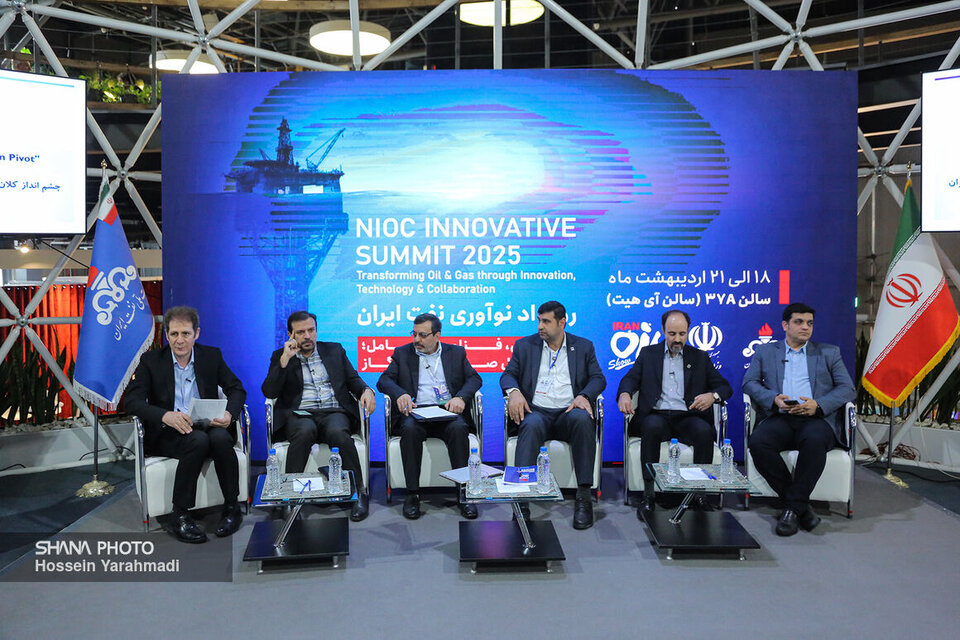Speaking at a panel on ““From Gray to Green: Iran’s Hydrogen Pivot” held on the sidelines of the 29th Iran International Oil, Gas, Refining and Petrochemical Exhibition, also known as Iran Oil Show 2025, Mohammad-Sadeq Jokar, urged the need for structural development in energy sector, adding, “Some countries are taking a structural approach to energy transition, laying the groundwork for a new system. Iran must act with greater precision in shaping its energy future and leverage the capacities of oil ministry and its cooperating institutions."
“We are entering a critical phase and these are no longer just challenges. Energy transition must be managed according to national interests and consumers must change their perception of the future,” he said while referring to the current conditions of energy market.
“There is no time to lose,” he warned, emphasizing that Iran must carefully draft its energy supply document to secure its position in global energy mix.
“Iran could play a key role in hydrogen sector, provided research and executive institutions work closely together,” Jokar noted.
Referring to recent collaborations with international think tanks, he stated their scientific approach was noteworthy and led to cooperation beyond immediate needs. Such collaborations could serve as a model for moving Iran’s scientific goals and energy diplomacy forward.
Meawhile, The Director General of the Department for OPEC Affairs and Relations with Energy Communities at the Oil Ministry, Ehsan Taghavinejad, stressed on the importance of a national hydrogen document that could be presented and defended in international forums.
Since the initial hydrogen discussion started at the World Economic Forum and World Energy Council in 2017–18, Iran has tracked global trends in this area. All measures from Japan’s hydrogen proposal at the G20 to the U.S. energy secretary’s letter in 2021 underscored the strategic importance of hydrogen as an energy carrier.
Iran, with over a century role in global energy supply, plans to maintain its role in future century, he said, noting, “In collaboration with research and technology department at the National Iranian Oil Company (NIOC), a hydrogen strategy document was drafted using both top-down and bottom-up approaches, taking local technology into account and reacting to international expectations.
He then criticized aggressive carbon-neutral policies by Western countries, adding, “Climate policies should not erase the fundamental role of oil and gas in global energy security. Iran must use modern technology to maintain oil and gas as part of the global energy solution and play a key role in sustainable energy supply.”
Moreover, speaking at the panel, Director General of MOP Research Affairs Department, Mehdi Khanbeigi, underscored the importance of hydrogen value chain and Iran’s systematic progress in this regard, saying Iran has successfully taken steps in hydrogen, despite a significant technological gap with Japan, Germany, and South Korea.
He said technological development in hydrogen requires precise planning and a comprehensive roadmap. A comprehensive research, technology and commercialization system is needed to provide the ground for attracting smart investment.
Meanwhile, the Head of Planning of Research and Technology Directorate at NIOC, Ahmad Hosseini, said Iran began planning for hydrogen in late 2022, as part of a program for energy transition and shift toward clean energy.
Hydrogen is a viable alternative for energy production, storage, transportation, and electricity generation. Thus, a specialized taskforce was formed, comprising key management sectors within the National Iranian Oil Company alongside two scientific arms, the Research Institute of Petroleum Industry and the Institute for International Energy Studies, to assess its feasibility and development pathways.
Over 11-12 months in last Iranian calendar year 1403 (ended March 20, 2025), the taskforce examined key aspects including market identification, technical-economic analysis, global trends, and hydrogen network conditions, leading to drafting a strategic hydrogen document in oil industry which covers all processes from production to export hydrogen.


Your Comment